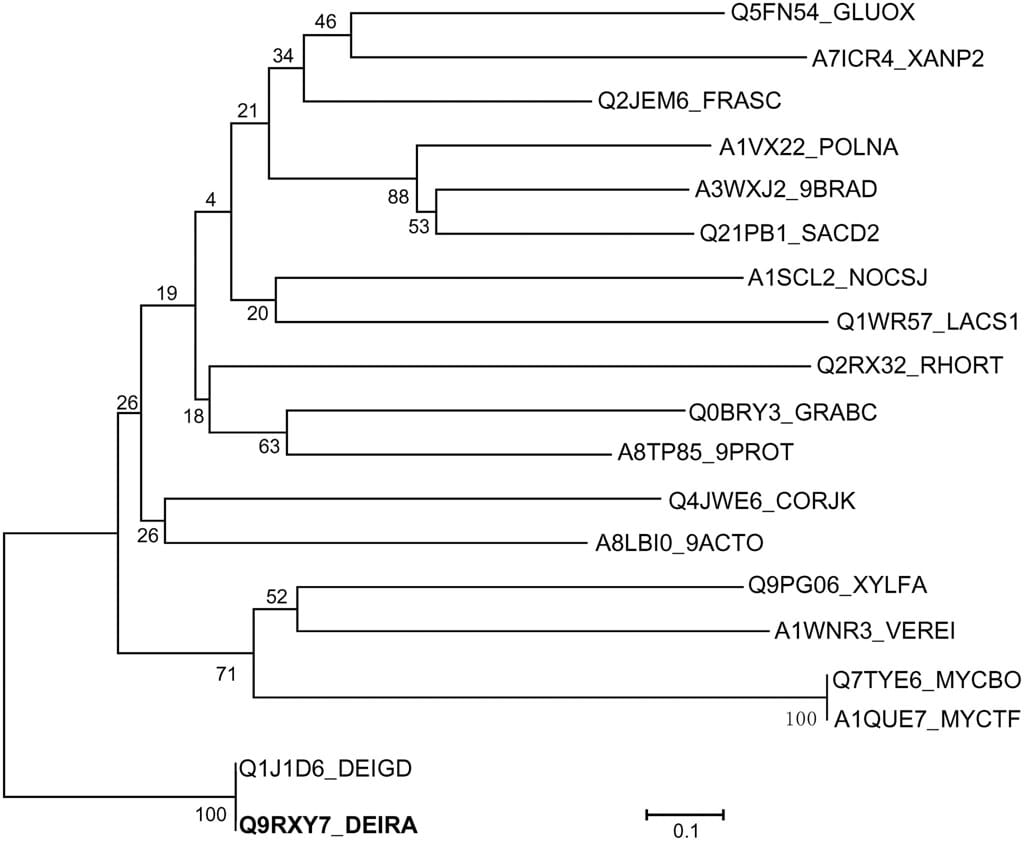The Indestructible Microbe: Meet Deinococcus radiodurans, the Only Known Organism That Laughs at UV-C Light
In a world where UV-C light can sterilize surgical instruments, purify water, and eliminate 99.9% of pathogens in seconds, scientists have stumbled upon nature's ultimate survivor—a microscopic organism that not only withstands lethal doses of UV-C radiation but actually thrives in conditions that would instantly kill every other known life form on Earth.
The Ultimate Sterilization Challenge
UV-C light, with wavelengths between 200-280 nanometers, has become humanity's go-to weapon against germs. Hospitals use it to disinfect rooms, water treatment facilities rely on it to eliminate dangerous bacteria, and during the COVID-19 pandemic, UV-C devices flooded the market as the ultimate sanitization solution.
The science behind UV-C's lethal power is brutally simple: it damages DNA and RNA so severely that cells cannot repair themselves and die within minutes. Even the most resilient bacteria, viruses, and fungi succumb to UV-C exposure times measured in seconds rather than hours.
But Deinococcus radiodurans didn't get the memo.
Meet the Indestructible Bacterium
Discovered in 1956 by Arthur Anderson at Oregon Agricultural College, Deinococcus radiodurans earned its nickname "Conan the Bacterium" for its seemingly supernatural ability to survive conditions that should be absolutely lethal. This spherical, red-pigmented bacterium can withstand radiation levels 3,000 times higher than what would kill a human being.
While most organisms suffer fatal DNA damage from UV-C doses as low as 10-20 millijoules per square centimeter, D. radiodurans can survive exposures exceeding 50,000 millijoules per square centimeter—levels that would sterilize an entire operating room in seconds.
The Secret Behind Its Superpowers
Redundant DNA Protection
What makes this organism virtually indestructible lies in its unique cellular architecture. Unlike most bacteria that carry one or two copies of their genome, D. radiodurans maintains four to ten copies of its complete DNA sequence. When UV-C radiation shatters its genetic material into hundreds of fragments, the bacterium can reconstruct its genome using the undamaged copies as templates.
Lightning-Fast DNA Repair
The bacterium possesses an extraordinary DNA repair system that can reassemble completely fragmented chromosomes within hours. Research published in Nature revealed that D. radiodurans can repair over 200 double-strand DNA breaks simultaneously—a feat that would be fatal to virtually any other organism.
Protective Cellular Compounds
The organism also produces high concentrations of antioxidants and protective proteins that shield its cellular machinery from radiation damage. These compounds, including unique carotenoid pigments that give the bacterium its distinctive red color, act as molecular bodyguards against destructive radiation.
Real-World Implications and Applications
Biotechnology Breakthroughs
Scientists are now engineering D. radiodurans for practical applications. Researchers have successfully modified the bacterium to consume toxic waste while surviving in highly radioactive environments, potentially revolutionizing nuclear cleanup efforts. The organism could help remediate contaminated sites like Chernobyl or Fukushima.
Space Exploration Potential
NASA has identified D. radiodurans as a potential tool for terraforming Mars. The bacterium's ability to survive extreme radiation could make it invaluable for establishing life-support systems on planets with minimal atmospheric protection against cosmic radiation.
Medical and Industrial Applications
The organism's DNA repair mechanisms are being studied to develop new cancer treatments and anti-aging therapies. Additionally, enzymes from D. radiodurans are being incorporated into industrial processes that require extreme durability.
The Humbling Reality Check
The existence of D. radiodurans serves as a powerful reminder that nature often surpasses human engineering. While we've developed UV-C technology as our ultimate sterilization tool, this microscopic organism demonstrates that life finds ways to persist in even the most hostile conditions imaginable.
This discovery has profound implications for our understanding of life's limits and possibilities. If organisms can survive such extreme conditions on Earth, the potential for life existing in harsh environments throughout the universe becomes far more plausible.
D. radiodurans may be microscopic, but its impact on science is enormous—proving that sometimes the smallest survivors teach us the biggest lessons about resilience, adaptation, and the incredible tenacity of life itself.
